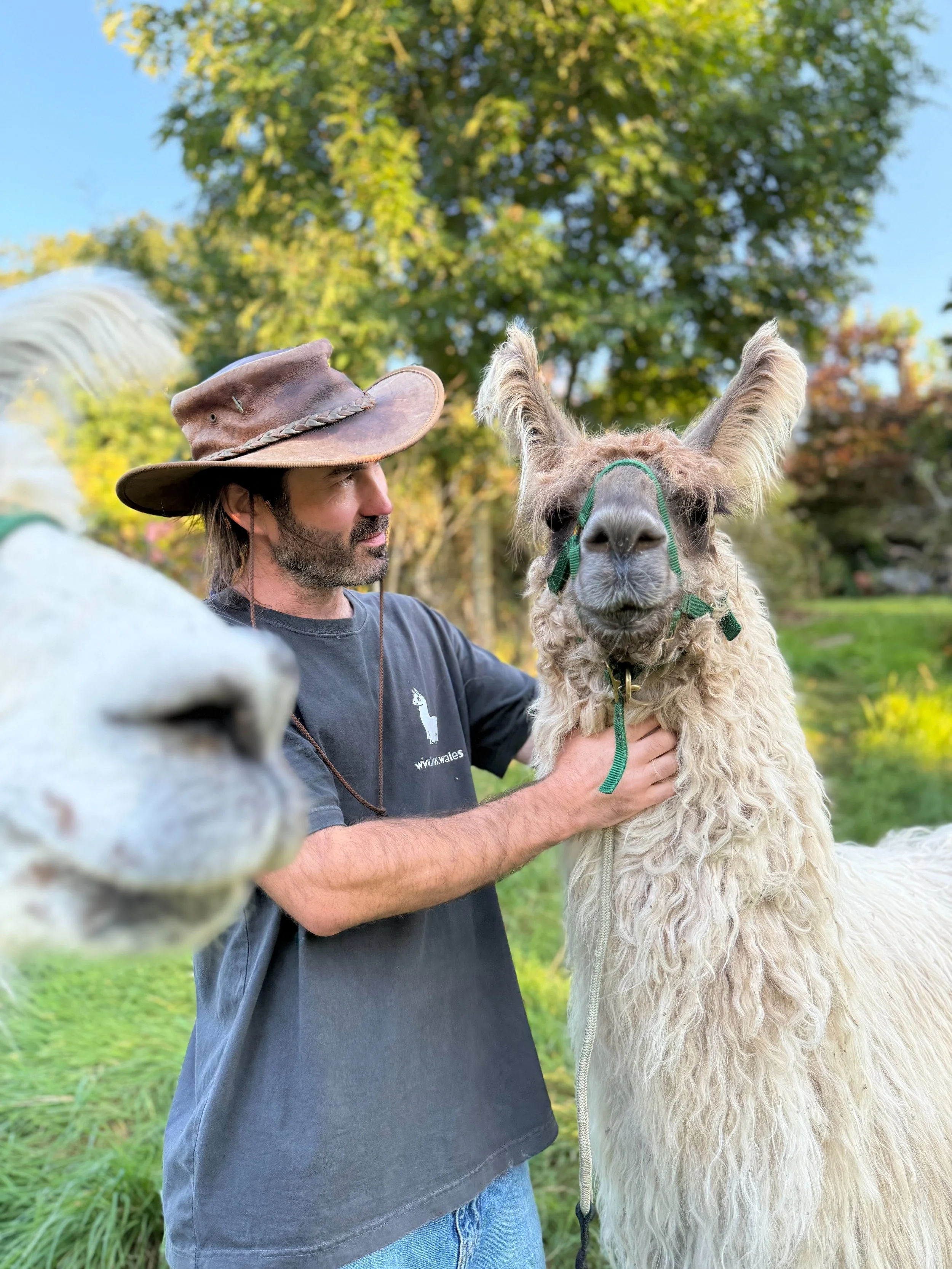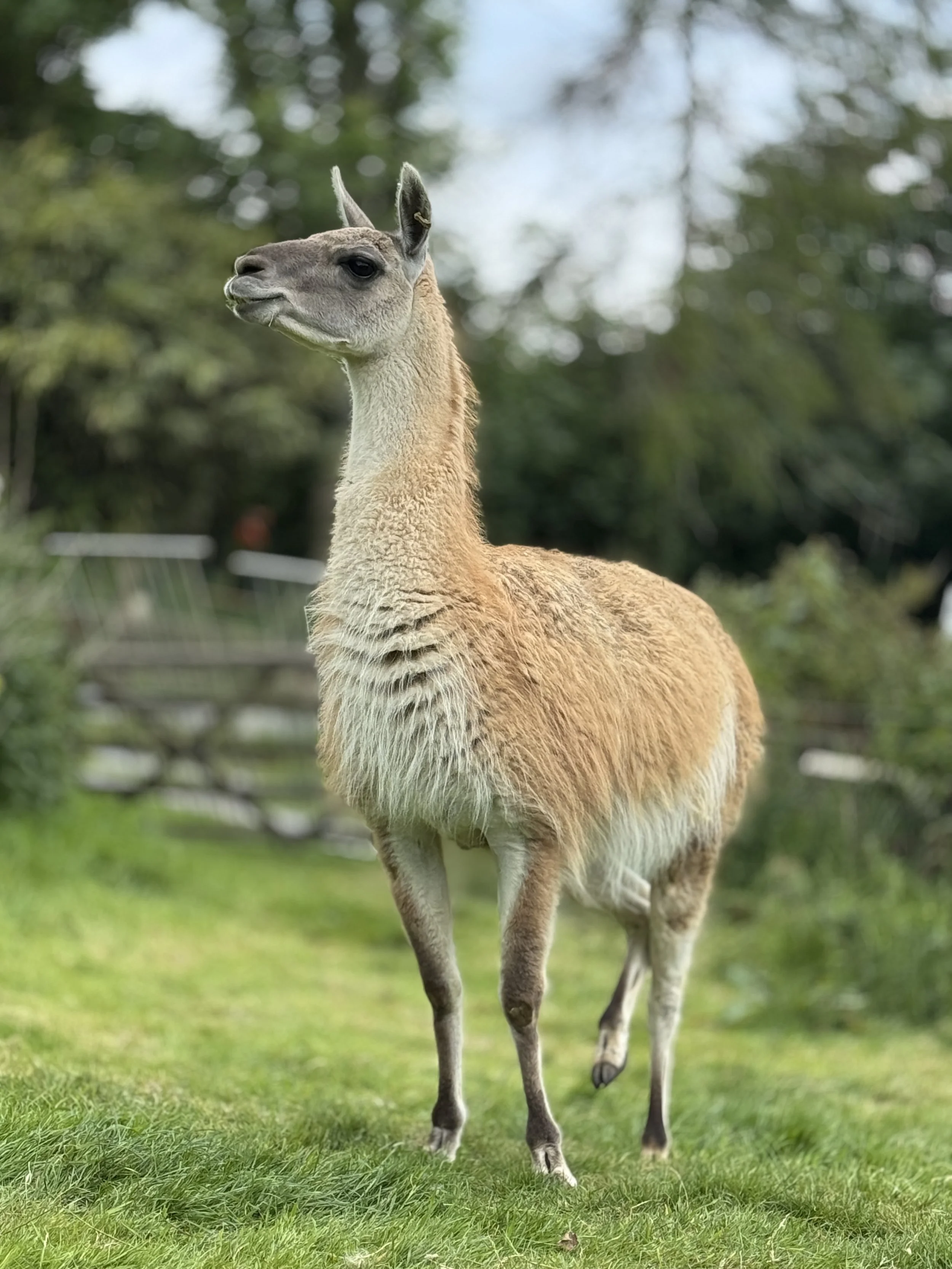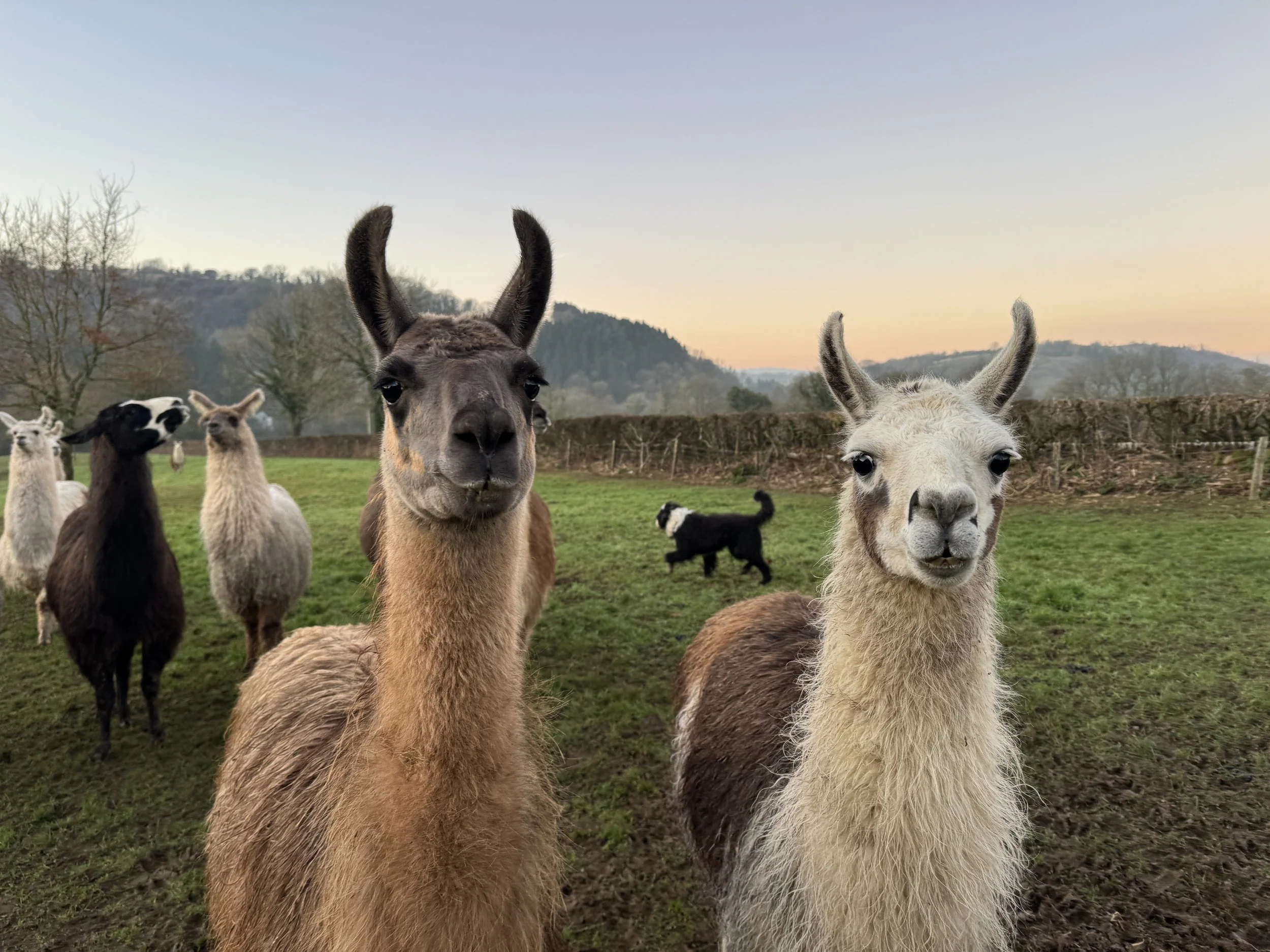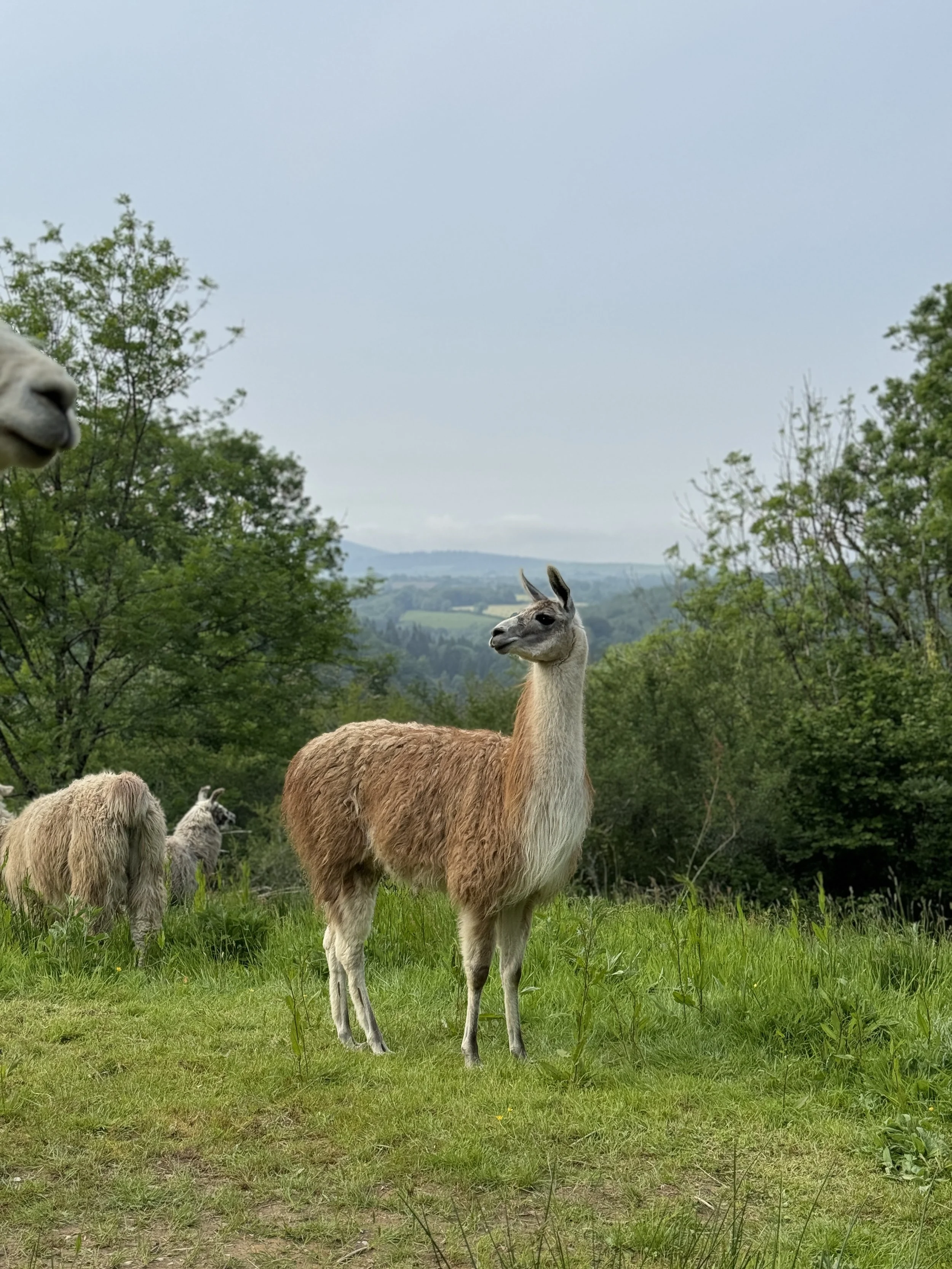A safe haven for llamas
Registered Charity 1212324
Rehoming llamas across the UK
The Llama Sanctuary is a registered charity that aims to provide a long term home for any llama in need of assistance in the UK where the current owners are no longer capable of providing adequate levels of care for their animal(s) due to health, finances, or any other reason. We seek to provide ongoing care, food, appropriate habitat, behavioural training and veterinary aid where required.
We are the only charity in the UK that specialises in llama rehoming.
Since successfully registering as a charity in February 2025, we have been fortunate enough to have been contacted by several very generous individuals who want to donate to the sanctuary. We are now in an enviable position whereby we can think about purchasing additional land for the charity to operate from, thus alleviating our ongoing capacity challenges and reducing pressure on the existing land.
We have identified several suitable plots of land in the vicinity of our existing site, and we almost have enough investment lined up to make the purchase a reality, but not quite. This is a rallying cry to all of us who care about llamas; to tentatively reach out to determine if there is anyone out there who would be willing to invest in the sanctuary project to get us over the line. No sum is too little or too great, and any type of investment or finance would be appreciated to help get us up and running.
We fully appreciate that the economy is not in a great place right now and not everyone will be able to help, nor would we expect them too. We also know that there are a million and one worthy causes for us all to dedicate time and money to. But if you do find yourself in a position where you could help, please do get in touch - we are aiming to build something that can be a reliable long term resource for all llama lovers and we are aiming to make the sanctuary robust and independent so that it can outlast us and go on to serve thousands (millions?) of llamas for decades and centuries to come.

Follow us across social media
Find us on TikTok, Instagram, Facebook, and X





